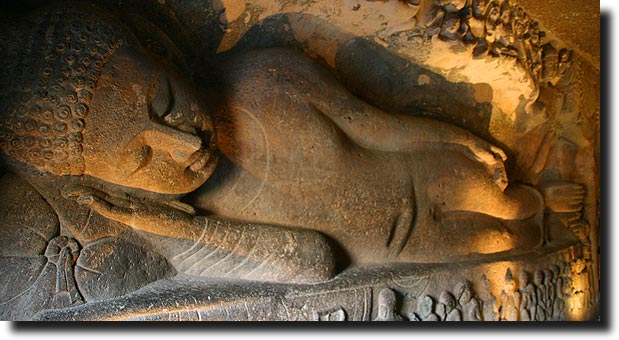


The Ajanta caves - located about 2 hours outside of Aurangabad - are a fabulous series of Buddhist monasteries that are fascinating because of the paintings inside.
|
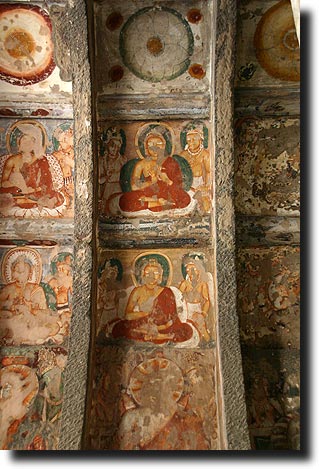
Carved in a U-shaped ridgeline that follows the bend of a river below, these caves were used for hundreds of years by Buddhist monks and then forgotten.
|

The spring flowers greeted us as we took our shuttle bus up into the complex, but the parched brown hillsides reminded us that spring has a very different meaning here.
|

Visitors leave their shoes off when entering a cave (or other holy place), and Breck's troubles in getting one off provided a moment of amusement for another guest.
|
 |
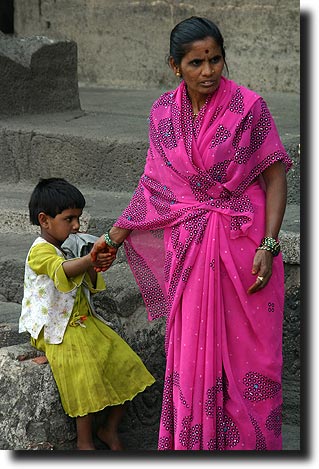 |
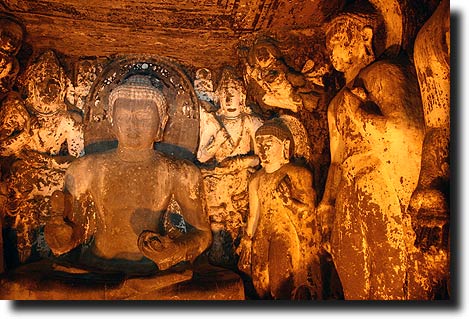
Our kids seemed interested enough in the stories about the Buddha
|
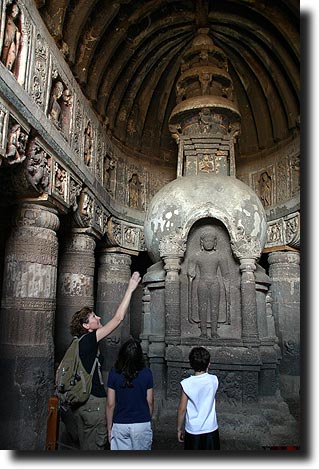
and listened to mom explain the significance of all the carvings.
|
